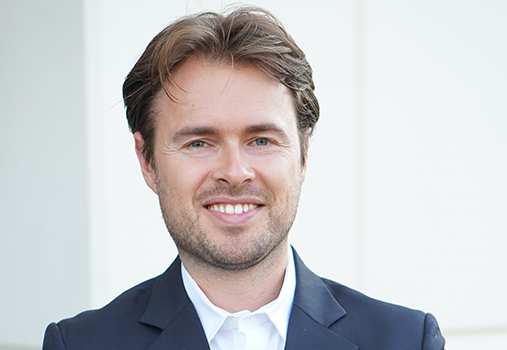Digital transformation can – and must – coexist with legacy systems. That view comes from Martin Prescher, CTO of auto loan platform AutoGravity. In an interview with The Enterprisers Project, he explains how this can work.

The Enterprisers Project (TEP): In finance, there is massive regulation in addition to legacy technology and ingrained tradition, all of which would seem to make digital transformation difficult or impossible. What types of conversations need to happen so that a digital transformation can occur?
 Prescher: Digital transformation is not about disrupting a whole industry and running enormous IT projects to realize innovation. The conversations that need to happen evolve around the customer and how established market players can embrace innovative experiences as an add-on to their existing technology.
Prescher: Digital transformation is not about disrupting a whole industry and running enormous IT projects to realize innovation. The conversations that need to happen evolve around the customer and how established market players can embrace innovative experiences as an add-on to their existing technology.
With the current legacy and IT systems, it’s very hard to produce a really good customer experience, but we at AutoGravity are doing it. At the same time, we have a powerful server-side system that connects to the legacy IT systems of the banks. In my experience, technology when built right can augment existing IT systems and deliver a seamless experience to the customer, without making any compromises as far as security or regulations are concerned.
TEP: How can you gain credibility with established players when proposing a radically different business model in a traditional industry?
Prescher: It is important to exceed what is already available and deliver data-current technology. For example, AutoGravity gains credibility by offering established lenders ways to be innovative without years of expensive IT projects and disrupting established business processes.
The most important piece for banks is really the notion of a solid security system. AutoGravity implements a proprietary security system that exceeds industry standards when we onboard a lender. Additionally, we keep the IT effort for the banks extremely low. We don’t rely on banks to do large IT projects to deliver on the AutoGravity experience; we do a lot of the heavy lifting on our side. This showcases our capability and understanding of the world of banks and finance.
TEP: In a time when it's harder than ever to hire the tech talent you need, how do you build the team you need? And how do you retain top talent in a competitive marketplace?
Prescher: The key to hiring top engineering talent is to empower people and create a culture of ownership. At AutoGravity, our IT structure and engineering organizational structure are 100 percent aligned in that teams can work independently and individual engineers can take a lot of ownership over their specific components of the system. That’s a change from traditional ways of developing in which people only contribute to certain parts of the application.
AutoGravity breaks up teams into many different groups that run independently and we also keep everyone accountable for their part of the system. This introduces credibility to our lending partners and others because we have a very transparent development process, which is agile but secure so that we can create highly security code in a distributed team.
TEP: Your company must deal with large datasets from many different sources. How do you meet the challenges that creates?
Prescher: We take data from different data sets in our system and put it together in a flexible framework. AutoGravity uses flexible database structures to ingest and store vast amounts of data and process it according to the specific requirements of the particular case. Our analytics framework is able to pull together data from disparate sources in the system and do high-performance analytics. This all takes place while in a secure space, keeping in mind that all customer information is sensitive.
TEP: What advice would you offer other CTOs about creating new digital products in established, regulated, tradition-bound industries?
Prescher: I highly encourage CTOs to be aware of all aspects of creating innovative products in legacy-rich industries. The problem is that the organizational structure usually mirrors the IT architecture. If you build an application a specific way, you build your organization the same way, and that blocks you into that specific technology.
At AutoGravity, we do this differently – we keep a very flexible IT structure, also implying that our organization is very flexible and empowering for the engineering team. We mirror our flexible IT structure with a modern organizational structure that allows people to have different career paths.



